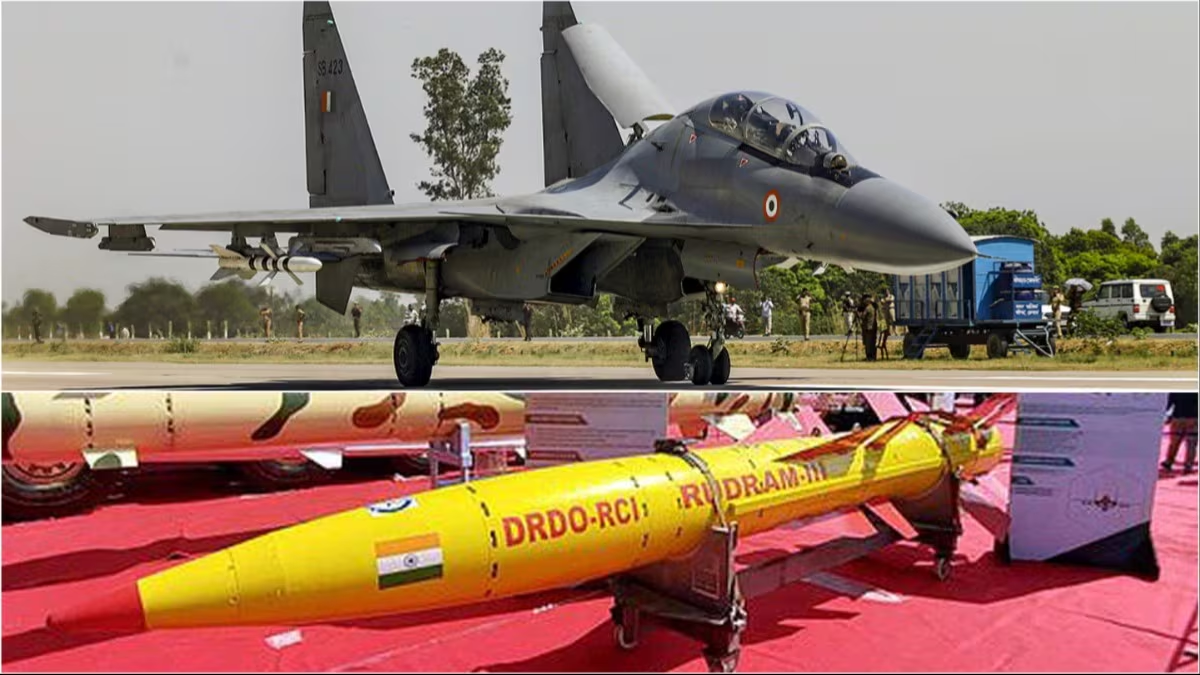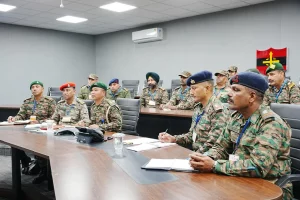India has conducted successful release trials of the RudraM-III hypersonic anti-radiation missile from a modified Su-30MKI fighter aircraft, signaling a significant advancement in the country’s indigenous defense capabilities. This successful testing marks a vital step in missile-aircraft integration, paving the way for future operational deployment with the Indian Air Force (IAF).
The trials involved the successful release of two RudraM-III missiles from the Su-30MKI, which serves as a frontline multi-role fighter within the IAF. These trials followed earlier tests that focused on captive carriage and dummy drops, representing a crucial progression in the missile’s development cycle.
Modifications to the Su-30MKI were extensive in order to accommodate the RudraM-III. These modifications included the installation of custom weapon stations, a specially designed bomb rack, and complete compatibility with the aircraft’s avionics through the MIL-STD-1553B data bus and mission computers. Compliance with interface specifications established by the Research Centre Imarat (RCI) in Hyderabad ensured seamless electrical integration.
According to HAL’s Annual Report 2024–25, these release trials highlight the successful adaptation of the RudraM-III for air-to-surface operations from a modified Su-30MKI platform. The RudraM-III is designed specifically for deep-strike, anti-radiation missions, and features cutting-edge technology.
Weighing approximately 1.6 tons, the RudraM-III can reach speeds exceeding Mach 5. When launched from altitudes around 11 kilometers, it has a striking range of up to 600 kilometers—twice the reach of its predecessor, RudraM-II, and four times that of RudraM-I. This capability is particularly crucial for Suppression of Enemy Air Defences (SEAD) operations.
Equipped with a dual-stage solid rocket motor, high-precision inertial and GPS navigation systems, and a passive homing head that can detect and engage radar emissions—even when enemy systems attempt to shut down to avoid detection—the RudraM-III excels in targeting high-value assets. These include radar installations, communication networks, bunkers, airstrips, and fortified aircraft shelters deep within enemy territory.
The missile’s impressive speed and range allow the IAF to perform stand-off attacks while remaining outside the reach of enemy air defense systems, significantly enhancing operational survivability and efficacy.
The successful integration of the RudraM-III with the Su-30MKI introduces an essential new capability to the IAF. The combination of the aircraft’s substantial payload capacity, extended range, and significant thrust with the missile’s advanced strike capabilities creates a formidable weapon system suited for modern electronic warfare and air dominance scenarios.
Defense experts view the pairing of the RudraM-III with the Su-30MKI as a transformative advancement, substantially boosting India’s offensive strike and SEAD capabilities. The success of these trials opens the door to further integration efforts with other platforms, such as the forthcoming TEJAS MK-2.
These trials also represent the culmination of intensive research and collaboration between the Defence Research and Development Organisation (DRDO) and various defense agencies. They underscore India’s ongoing commitment to self-reliance in advanced missile technology and demonstrate enhanced readiness for future combat challenges.
















